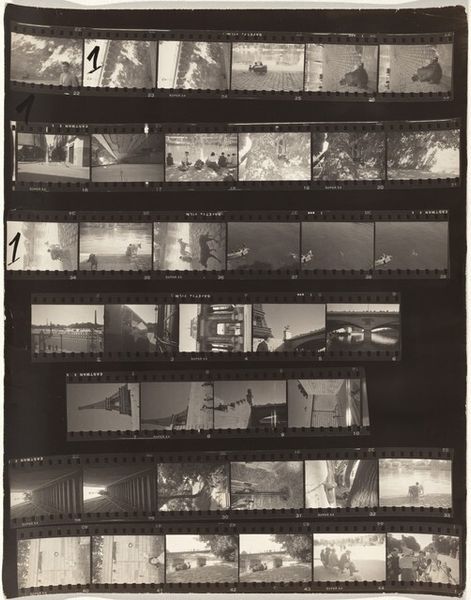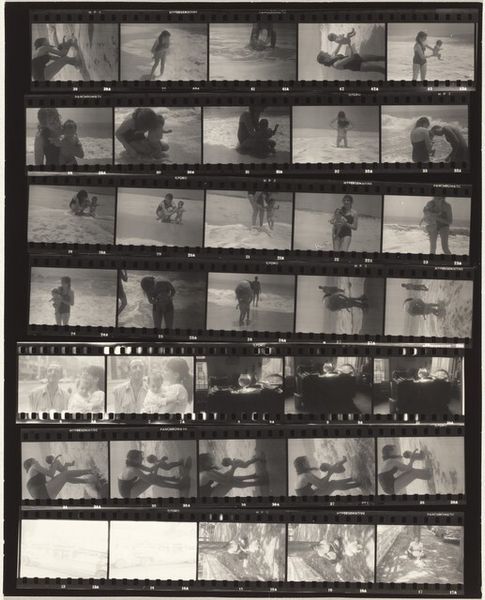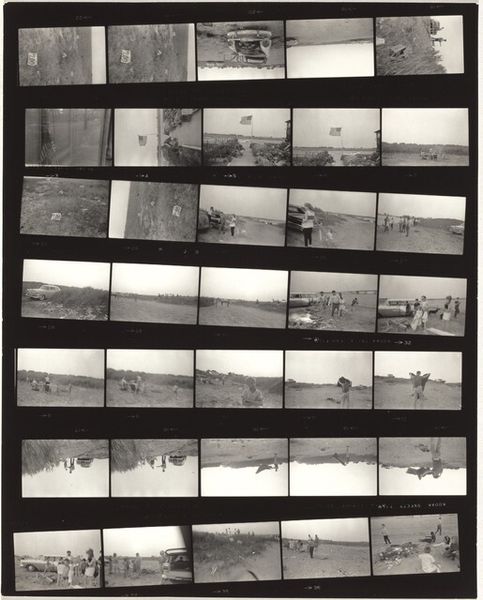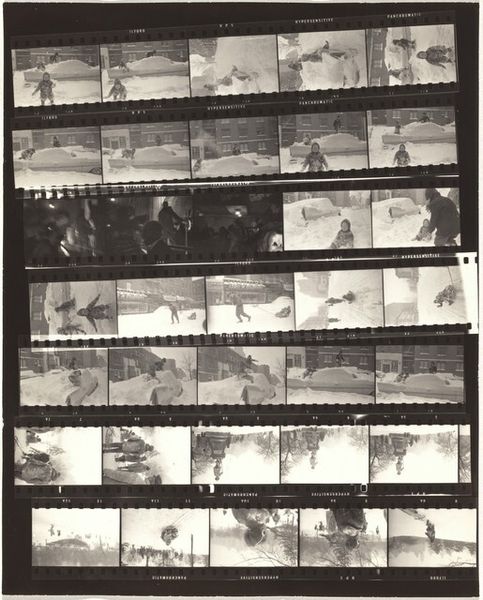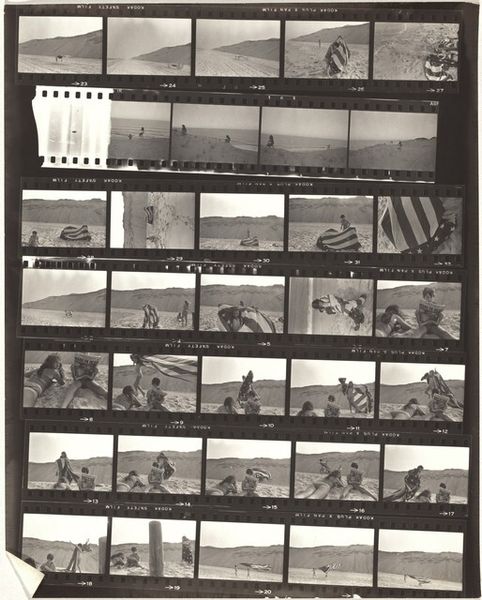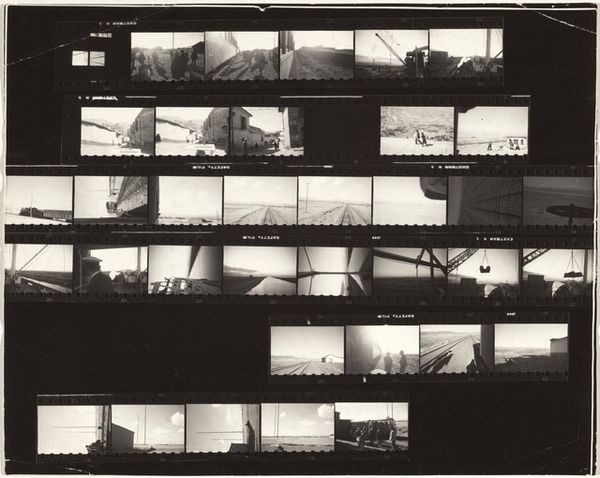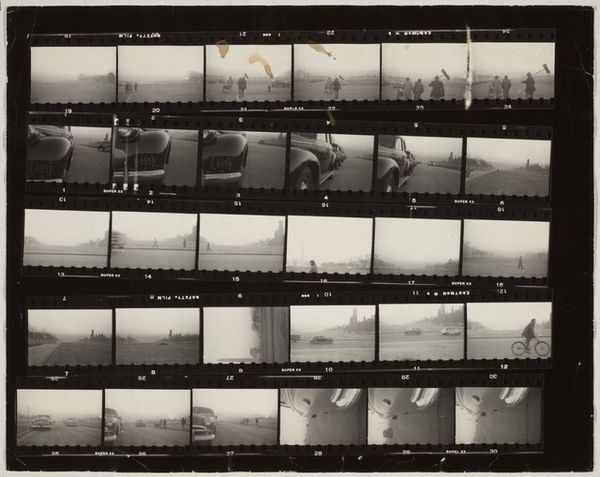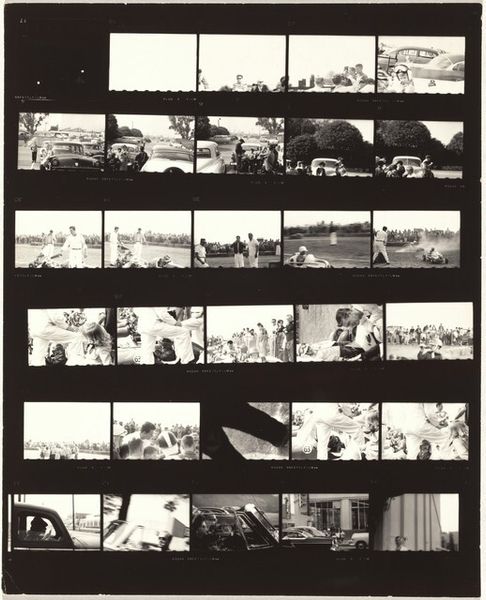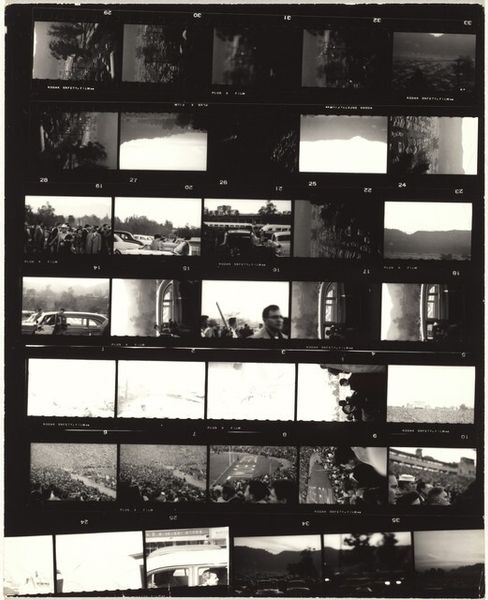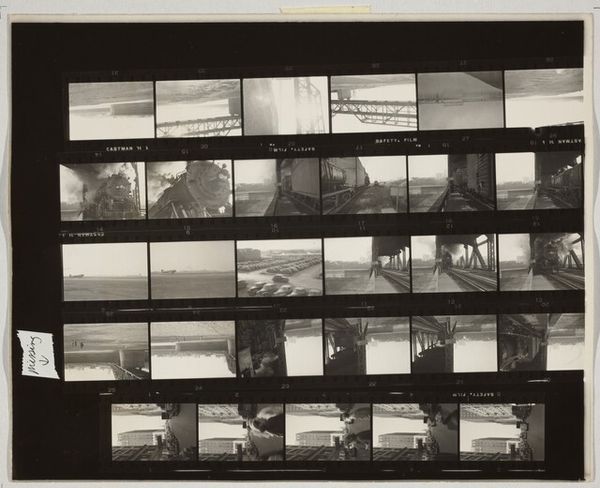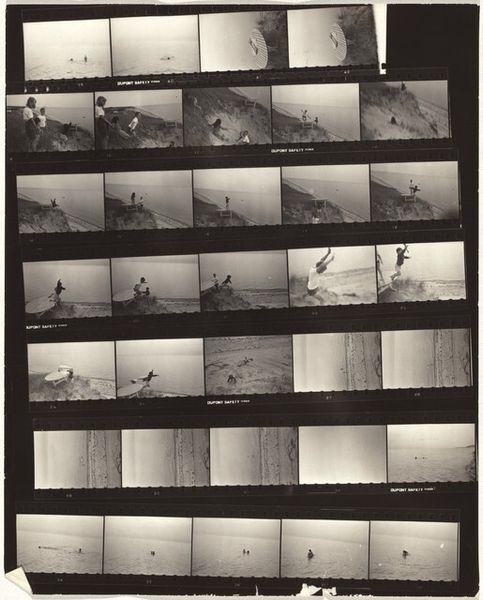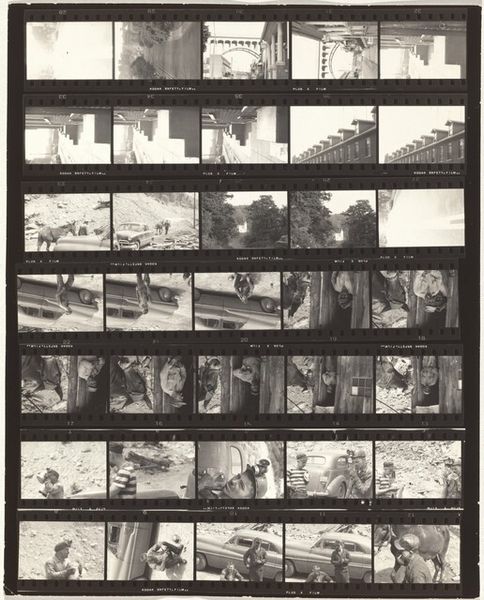
Dimensions: overall: 25.2 x 20.1 cm (9 15/16 x 7 15/16 in.)
Copyright: National Gallery of Art: CC0 1.0
Curator: Here we have Robert Frank’s “Family—Wellfleet 13,” a gelatin silver print created in 1962. Its format offers us something quite unique – a whole strip of the artist’s film roll with a series of images arranged in a grid, which are mostly beachside shots of people walking, sitting, looking toward the water, and one short portrait of the author. Editor: Whoa. It looks like a contact sheet—kind of raw, like flipping through someone's diary. Makes me feel like I’m eavesdropping, or stumbling upon a secret message in a bottle, doesn’t it? The starkness of the black and white adds to that private, slightly melancholy vibe. Curator: Precisely. This presentation denies us the singular, refined image. Frank seems interested in exploring process and sequence; what’s revealed, what’s discarded, how these images build meaning together. The use of monochrome emphasizes the interplay of light and shadow, the subtle gradations providing form. The sea, sky and human elements create distinct tonal relationships. Editor: Totally. The little glimpses—those out-of-focus moments, the awkward angles. Those capture something real about how memory works, right? Fragments, not polished perfection. Curator: We can examine the photograph through structuralist concepts such as repetition, contrast, and visual coding. Observe how Frank employs landscape conventions, particularly the horizon line. See how it varies through all images, acting almost like a binding agent that guides the viewer’s eyes. The emulsion and silver chemistry affect contrast and how visual data is received. Editor: It’s more intimate. It pulls me in to piece together what he felt that day in Wellfleet, you know? A single image would be beautiful, but the contact sheet, with the beachgoers' subtle differences in position or glance, feels like a puzzle he's daring me to solve. Curator: Indeed. There's a refusal of classical photographic framing here. Instead, it asks us to consider time, selection, the act of seeing. A meditation of seaside ephemerality that extends beyond its original context, now over sixty years ago. Editor: Sixty years! So crazy that this feels so much like…life! It makes you want to rummage through your own contact sheets if you ever shot film. Thanks for that deeper dive. Curator: It was a pleasure exploring Frank's compelling approach with you. These glimpses challenge us to reflect not just on the subject, but on artmaking itself.
Comments
No comments
Be the first to comment and join the conversation on the ultimate creative platform.

